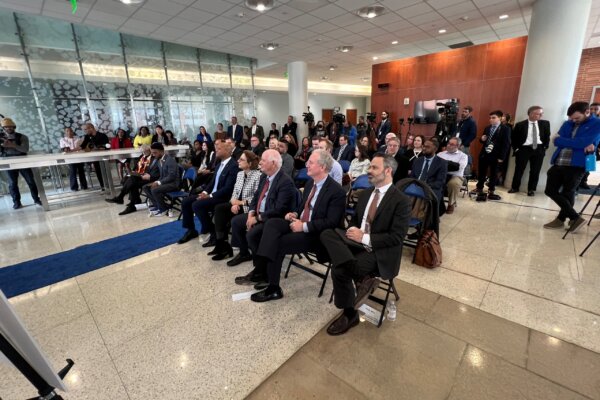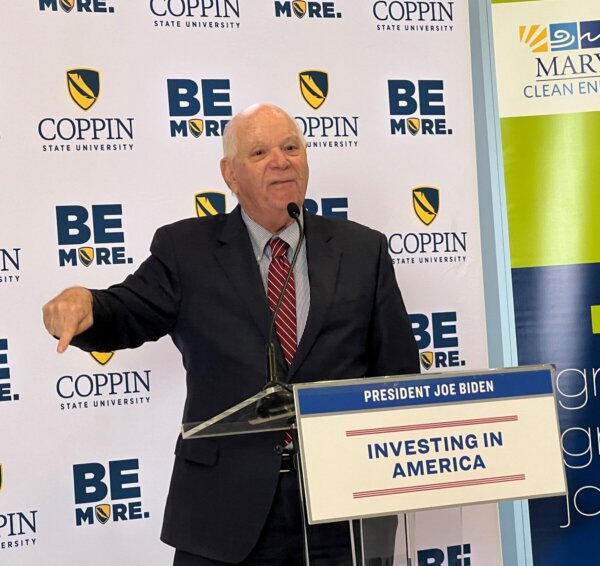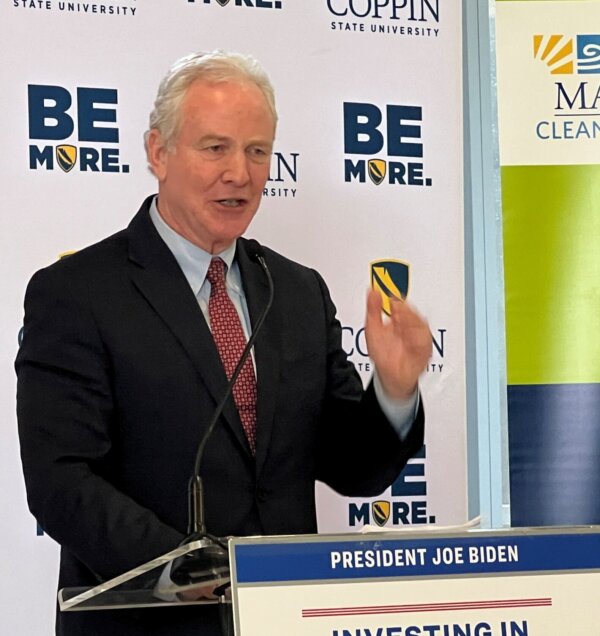Maryland is getting millions of dollars in federal money to ramp up the number of electric vehicle charging stations in the state.
Maryland Gov. Wes Moore said the state will use the $15 million from a federal grant to install 58 new electric vehicle (EV) charging stations around the state, adding that the project will create 600 new electrician jobs for men and women who will service them.
Moore said getting more EVs on the road is part of the state’s long term climate change goals and many of the charging stations will be in lower income, traditionally underserved communities.
“I have been very clear that we are going to achieve 100% clean energy by 2035 and zero emissions by 2045,” Moore said at an event Friday at Baltimore’s Coppin State University where the grant announcement was made.

“The proposed sites for these 58 EV charging stations include locations in disadvantaged communities intentionally,” Moore told the crowd.
One of the charging stations is slated to be on the campus of Coppin State.
The money going to Maryland is part of the Biden-Harris administration plan to give state and local governments $623 million in grants to help build out an EV charging network across the U.S. and the money is part of the more than $1 trillion, two-year-old infrastructure law.
U.S. Senators Ben Cardin (D-Md.) and Chris Van Hollen (D-Md.), and a long list of other state and city officials attended the announcement.
Cardin said states such as Maryland that are embracing zero or low emission vehicles will lead the country for a generation.

“The law that we passed requires that we focus on traditionally underserved communities, and we have a president that’s implementing those policies, and a governor that’s implementing those policies, a mayor that’s implementing those policies, and we are making a huge difference,” Cardin said. “It’s also the right thing to do for our economy and our economic future, and for jobs in the future.”
Working with federal and state governments, as well as the private sector, the Biden Administration has set a goal of getting 500,000 EV charging stations online across the country by 2030.
While electric vehicle sales continue to trend upward, it is going slower than many expected, even with extensive tax credits to lower the cost of the purchase.
While the leaders said they are proud to be present for the announcement, they were also quick to realize the real-world frustrations that still surround EVs. Van Hollen acknowledged some people are reluctant to buy an EV because of range anxiety.

“We all know that when people are thinking about buying an electric vehicle, the first thing they do is get out their maps and get online and try to figure out where all the charging stations are,” Van Hollen said.
Moore also said that the federal funding also includes new workforce development programs and this project will create 600 new union electrician jobs for men and women who help build and later maintain the charging network.
The governor said the new jobs are vital for his long-term economic and climate change goals, that includes Maryland being a leader when it comes to zero-emission transportation.
“I have been very clear that we are going to achieve 100% clean energy by 2035 and zero emissions by 2045,” Moore said.
At the event, U.S. Deputy Transportation Secretary Polly Trottenberg said the federal funding and getting the new EV charging stations installed will definitively show that EVs are a “viable and affordable mode of transportation.”
The Biden administration program will fund EV charging stations in 22 states and Puerto Rico, including EV charging and hydrogen fueling stations — and will result in 7,500 new charging ports nationwide, according to Secretary of Transportation Pete Buttigieg.
“We’re at a moment now where the electric vehicle revolution isn’t coming, it is very much here,” Buttigieg told reporters in D.C.
He added that around 1.4 million EVs were sold last year — about 9% of total passenger vehicles sales in the U.S.
Earlier officials also announced an $80 million project aimed at improving safety approaching the Baltimore Harbor Tunnel.
Some 28 million vehicles travel through the Harbor Tunnel each year, and drivers often face backups for miles during rush hour.
Part of the project will remove the toll plaza and install new overhead electronic toll-collection gantries, which officials at the grant announcement said could reduce crashes by 75%.
The Associated Press contributed to this story.








